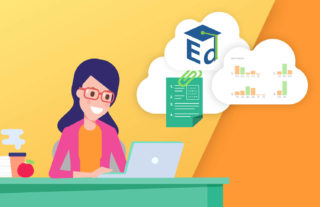Remediation and Learning Acceleration: How are they Different?


The Post COVID-19 Education Era: What remains and what’s changed?
In many ways, as humans, there is a temptation to return to what has always been. This has been especially evident as states and districts have been navigating this global pandemic. Michael Horn describes this phenomenon as “threat rigidity” – which is the idea that “if people frame something as a threat, then they respond far more energetically than when they frame something as an opportunity. So simply saying that the disruption COVID has caused is an opportunity to innovate and reinvent schooling is unlikely to get much traction.” Additionally he adds, “When people are threatened, …they stop being flexible and move to a ‘command and control’ response. They focus everything on countering the threat in order to survive.”
Right now, however, there is a tremendous opportunity to do more than just survive. This could be a time where education has its day in the sun! There is funding, flexibility, and leadership. This means districts really can transform a threat into one-in-a-lifetime opportunities. Let’s take a look.
What is Remediation?
The dictionary definition of remediation is simply “the act or process of remedying.” With remediation, educators typically begin with concepts that may have been missed from the previous year (e.g. a third grader revisiting second grade math). Some argue that this approach simply causes students to fall further behind and exacerbates existing disparities.
Additionally, it is clear that the United States Department of Education (USDE) does not want to rely on remediation for addressing lost instructional time. The word is mentioned only twice in their COVID-19 handbook, and one time is specifically requesting that educators NOT rely on it, stating, “To address lost instructional time, educators are encouraged to think differently about time, grade levels, and collaboration. Key approaches include ensuring educators and grade-level teams have time to learn new instructional strategies for acceleration and to coordinate to ensure that students learn without relying on remediation or pull-out instructional practices.”
USDE also states that “remediation can narrow educational opportunities for students and might lead them to become disengaged.”
What is Learning Acceleration?
When Congress passed the American Rescue Plan Act, the term remediation and addressing learning loss was sprinkled through the entire education section. However, as districts have moved to implement strategies to combat learning loss, the term learning acceleration has all but replaced the term and instructional model of remediation.
According to the United States Department of Education COVID-19 Handbook, “Learning acceleration focuses on quickly diagnosing gaps in critical skills and concepts that may impede students from accessing grade-level coursework. Acceleration provides instruction in prior knowledge and teaching prerequisite skills that students need to learn at a pace that allows students to stay engaged in grade-level content and lays a foundation for new academic vocabulary.”
Additionally, the Department adds that, “Educators face three key questions in determining the most appropriate interventions for acceleration:
- Where is each student in their mastery of critical skills and concepts,
- What interventions are most effective, and
- When will accelerated learning take place?
Regarding the last question, learning acceleration can take place before, during, or after school; on weekends; during school breaks; or over the summer. Schools may incorporate accelerated learning into electives and expanded learning time to provide more time in school to address challenging subjects.”
The key difference is the starting place for content. Instead of going back a year, the educator will start with current grade level content, identify missing concepts, and incorporate those previous concepts into the current curriculum.




